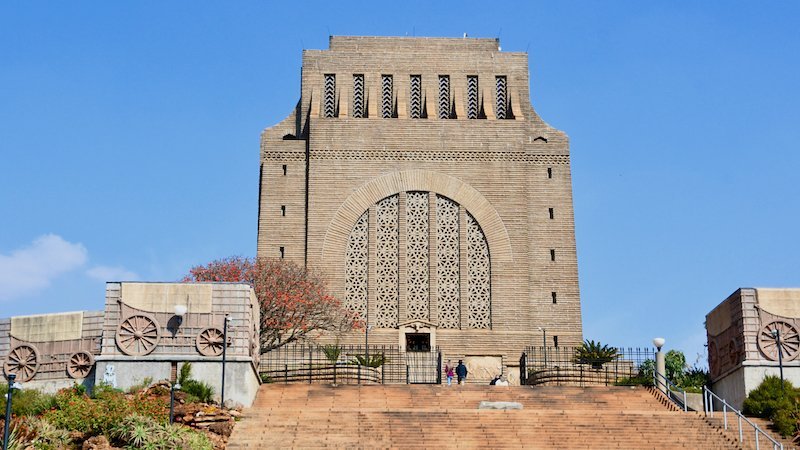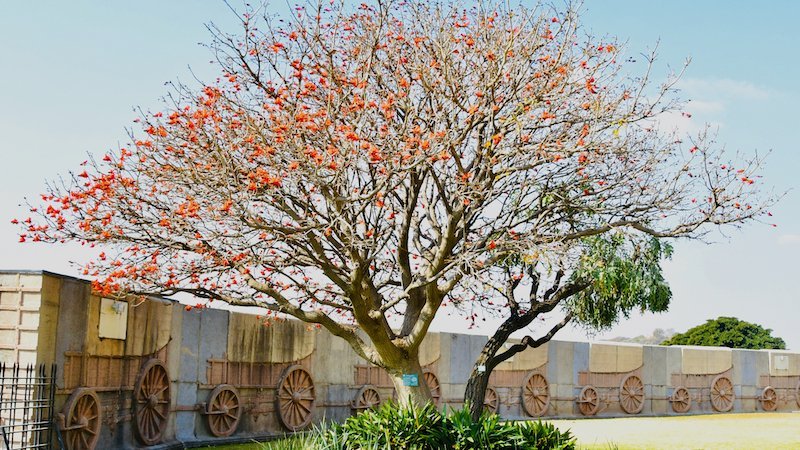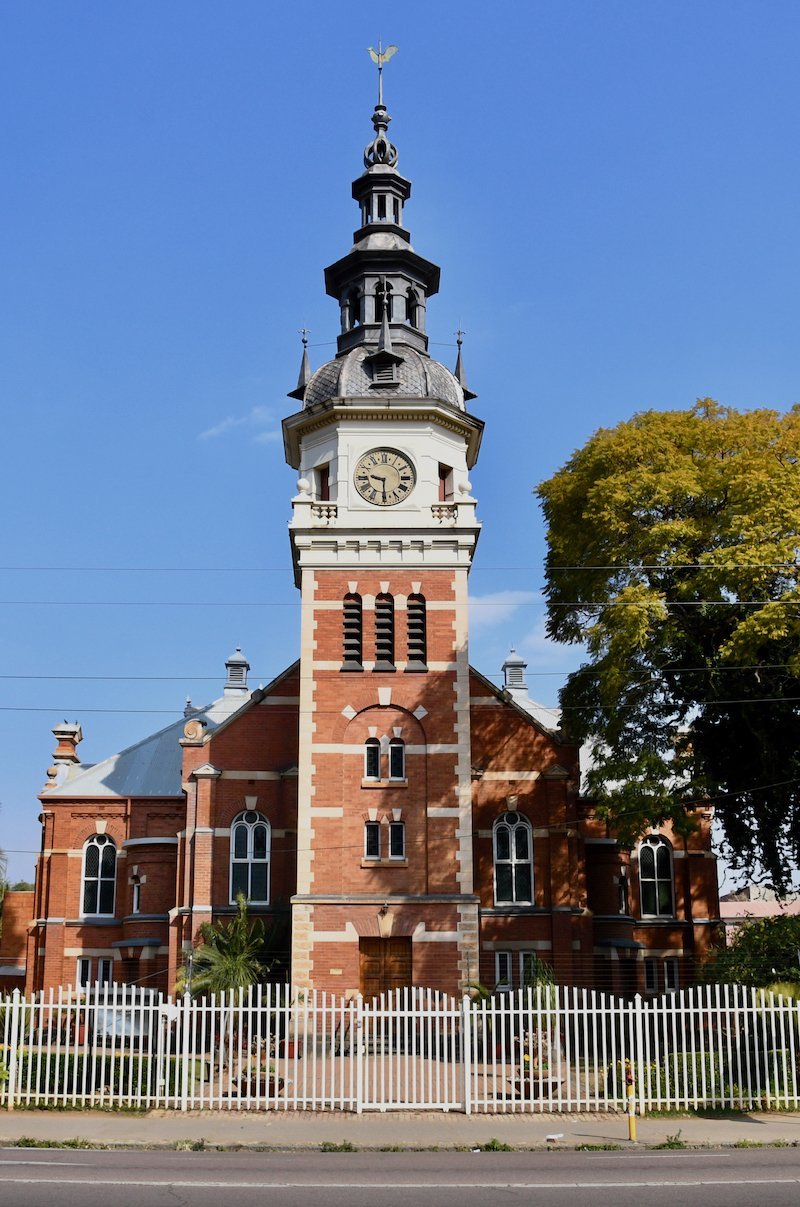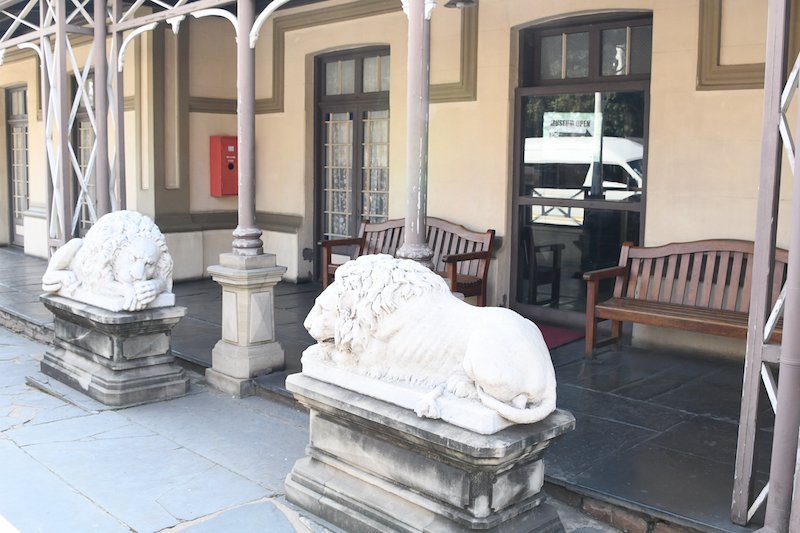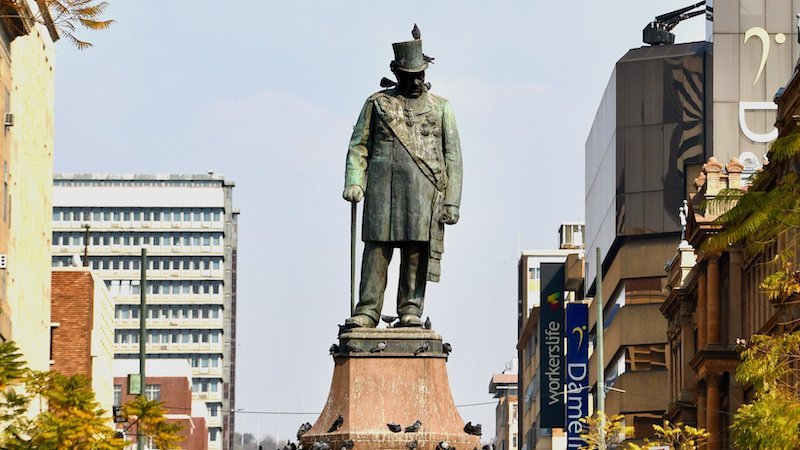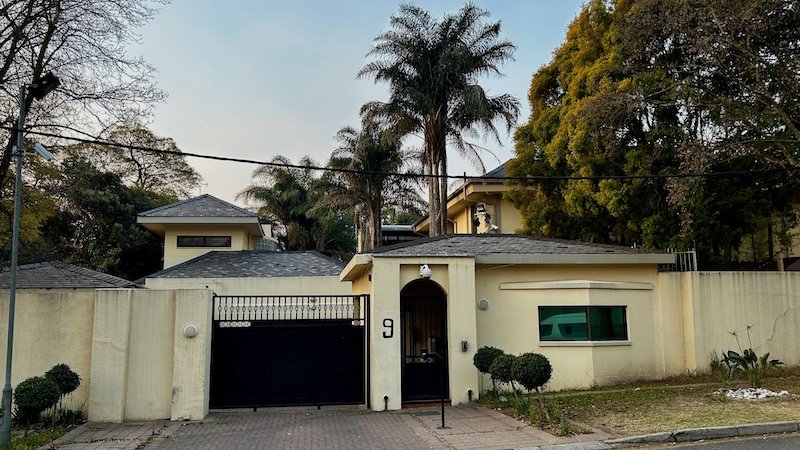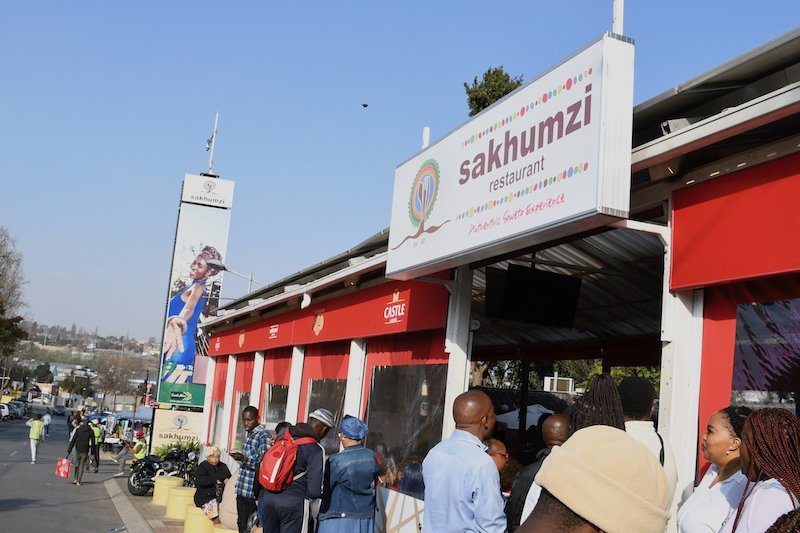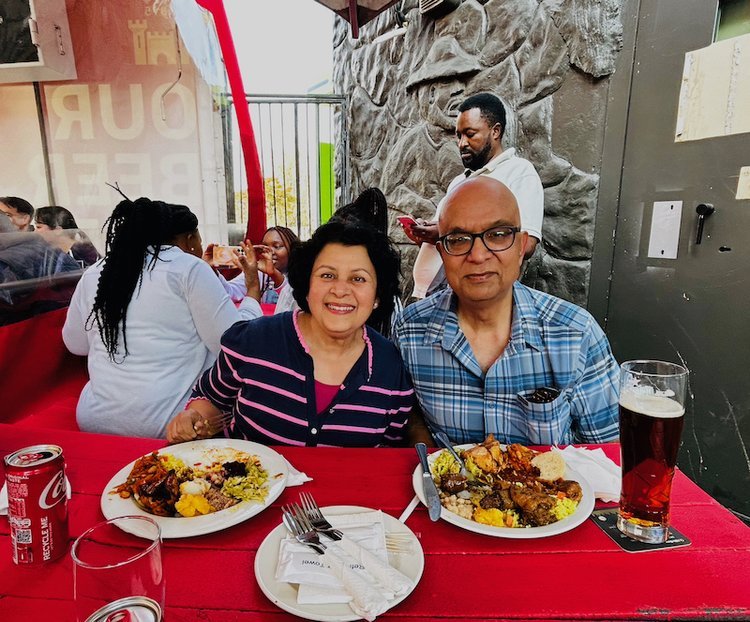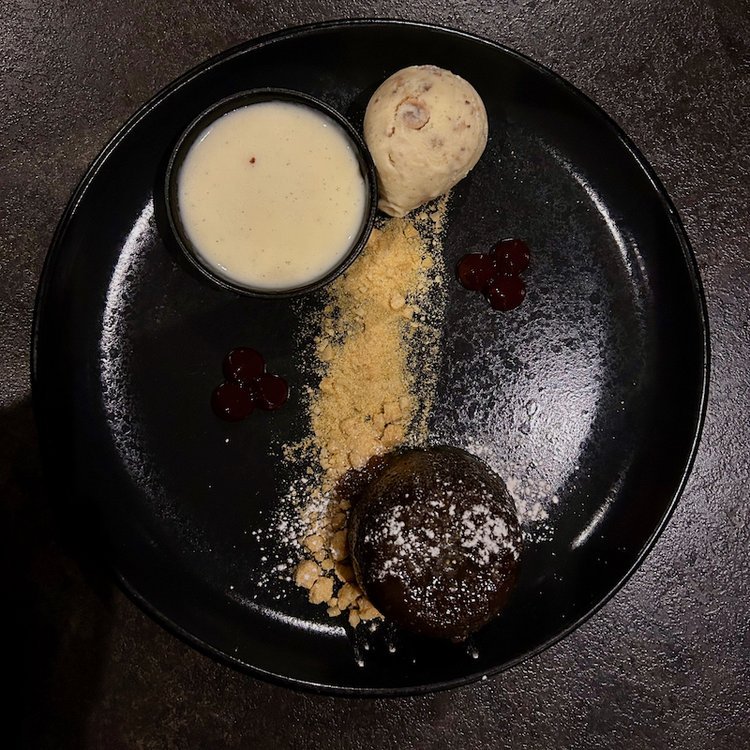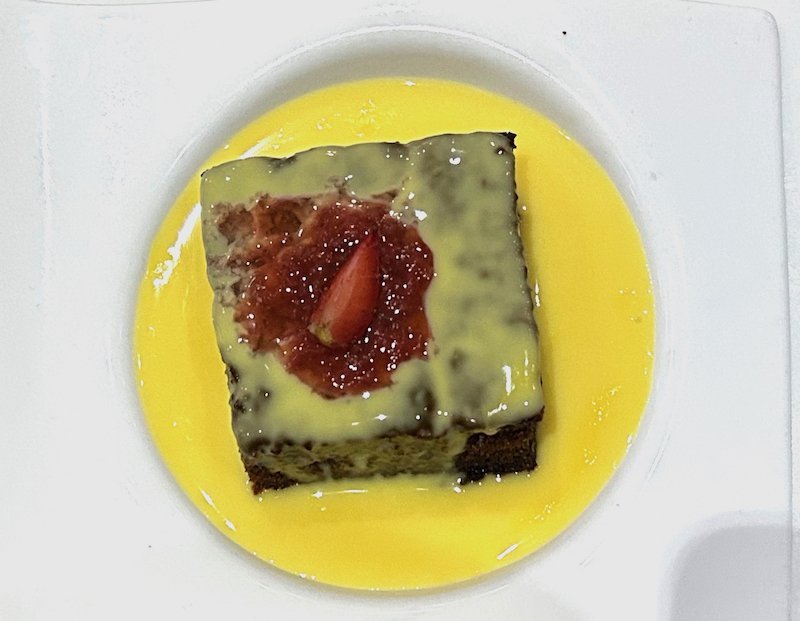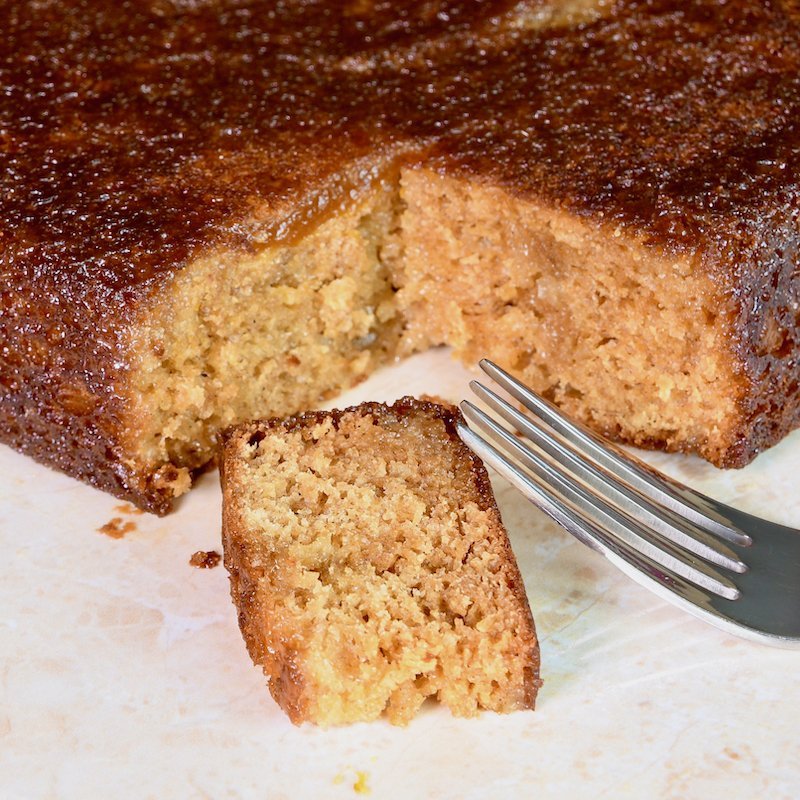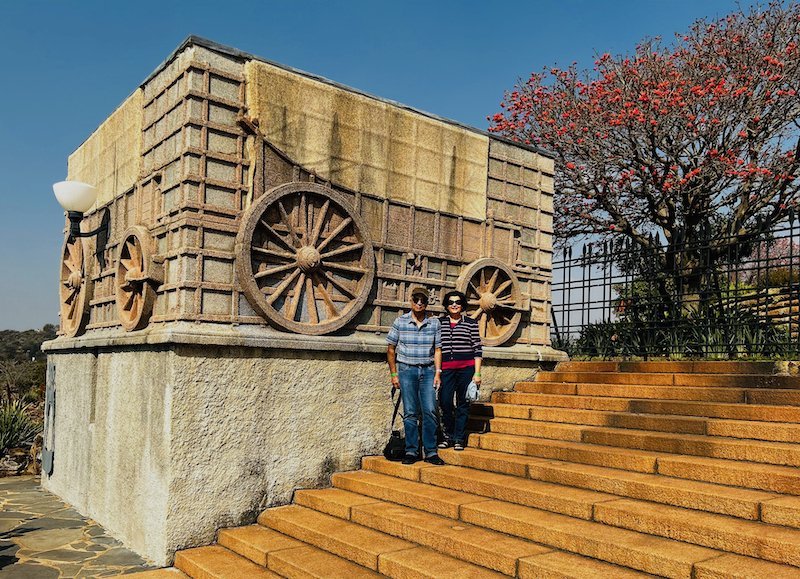Malva Cake In Johannesburg & Pretoria
On our recent trip to South Africa we were keen to see Pretoria and Johannesburg, which are less than an hour apart by car. We arranged for a tour guide to show us around and tell us about the history of the region. We started at the Voortrekker Monument outside Pretoria, although Nathan, our young South African guide, seemed visibly uncomfortable taking us there. It was a glimpse for us of the troubled history of South Africa, where feelings still run deep.
Dutch settlers had founded a colony in the seventeenth century at the Cape of Good Hope, which was a convenient stop for ships sailing from Amsterdam to the spice plantations run by the Dutch East India Company in Indonesia. The British seized the Cape Colony in the early nineteenth century and the Dutch colonists, known as Afrikaners, made an arduous trek into the interior of the African continent, where they battled the Zulu tribes living there and settled in Pretoria.The Voortrekker Monument was built in 1949 to commemorate this migration, but today Black South Africans have decidedly mixed feelings about what it celebrates.
The giant granite monument is surrounded by a circular wall on which are carved reliefs of the ox-wagons in which the Afrikaners travelled. They called themselves Boers, which means farmers, and Pretoria remained a sleepy farming community for decades after it was founded. Then, gold was found on a farm outside the town in 1884. As news spread of the largest gold discovery in the world, tens of thousands of prospectors descended on it from every part of the globe. The city of Johannesburg, rowdy and raucous from birth, sprang up virtually overnight to accommodate them. With fortunes being dug out of the ground every day it grew at breakneck speed and soon outgrew Pretoria. The two cities found different roles: Pretoria became the seat of government and Johannesburg the financial capital of South Africa.
Our next stop on the tour was the historical centre of Pretoria, Church Square, that was once the main market place. Today it is surrounded by mostly abandoned government buildings and courthouses. The imposing Paul Kruger church stands near the square, named after a nineteenth century president of South Africa.
The centre of the square is dominated by a statue of Paul Kruger, festooned with pigeons, and nearby is his house, still preserved as a museum. Two stone lions guard its front porch, where famously the President would sit and receive visitors, many of whom were just passing by and dropped in to chat.
Our guide, Nathan, was much more pleased to take us to Johannesburg, where we stopped to see the house where Nelson Mandela, the leader of South Africa’s struggle against apartheid, lived after retirement. He is revered around the world for leading South Africa to democracy and national reconciliation.
The next stop was Soweto, where Nelson Mandela lived for years. A short walk away from his house is that of Archbishop Desmond Tutu, another leader of the anti-apartheid struggle and a recipient of the Nobel Peace Prize. This is the only street in the world to have housed two Nobel prize winners.
Soweto is today a bustling place and popular tourist site. People come to see the museums devoted to the leaders of the anti-apartheid movement and for the lively art, theatre and music scene. Vilakazi Street, which runs through Soweto, is lined with restaurants and bars, and it is an exhilarating, uplifting experience to walk down it. There is a festive air about the place, with people breaking into an impromptu dance, posing for photographs or chatting animatedly in small groups.
Vilakazi Street is a great place to stop and try some local cuisine. We had a late lunch in the famed Sakhumzi restaurant that always has a long lineup of people waiting for a table. This was our chance to try traditional African food and we were excited! The food was served buffet style with local favourites such as lamb stew, roast chicken, boerewors, tripe, rice, pap and so many more dishes that we can’t even list them all. Needless to say, we were stuffed when we walked out and had to skip dinner!
One of the desserts that we first had in Soweto was Malva Pudding Cake, served doused in a puddle of yellow custard. Imbued with the haunting scent of cinnamon, it is spongy, caramelly, fruity and addictive! A uniquely South African dessert, it was first introduced by the Dutch who used the cinnamon brought over from the spice islands along with the plentiful apricots growing in South Africa.
Some say the dessert is called Malva pudding because Malva means marshmallow in Afrikaans, and the texture of the cake is like a marshmallow, while others claim it is due to the fact that the pudding used to contain Malvasia wine. Either way, it is delicious!
Known variously as Malva Cake or Malva Pudding, this delicious dessert is made with a generous helping of apricot jam. Soaked in a creamy, buttery syrup and served warm with custard, whipped cream or ice cream, this cake is like nothing you’ve tasted before. One bite and you’re going to be hooked on it! Give it a try and see for yourself.
Malva Cake
For The Cake:
1 cup all purpose flour
½ tsp each: baking soda, ground cinnamon
1 tsp baking powder
Pinch of salt
1 cup brown sugar
2 eggs
¼ cup apricot jam
2 tbsp melted butter
1 tsp vinegar
1/2 cup milk
For The Sauce:
½ cup whipping cream
½ cup butter
1/3 cup sugar
1/4 cup water
Preheat oven to 350F. Lightly butter an 8 inch X 8 inch baking pan.
Combine flour with baking soda, baking powder, salt and cinnamon. Set aside.
Place sugar and eggs in deep mixing bowl. Using an electric hand blender, beat until smooth and light, about 1 - 2 min.
Add apricot jam and beat until well blended, about 30 sec.
Add melted butter and vinegar and beat for about 30 sec.
Add milk, beat 30 sec.
Add flour mixture, beat lightly until smooth, about 30 sec - 1 min.
Pour batter into prepared pan and bake for 30 min or until cake tester inserted in the centre comes out clean.
While cake is baking, prepare sauce: combine all sauce ingredients in glass measuring cup and microwave for 1 min, stirring until smooth.
When cake comes out of the oven, immediately poke deep holes evenly all over the top with rounded end of a skewer or a knife.
Pour half of sauce mixture all over top of cake, making sure to cover the edges too. Let rest 1 - 2 min until absorbed, then pour remainder of the sauce over top again. If some of the sauce pools around the cake, that is fine, it will get absorbed later.
Let cake rest 15 min, then cut into squares and serve.
(Note: you can also upturn the cake onto a platter before cutting)
Serves four - six
